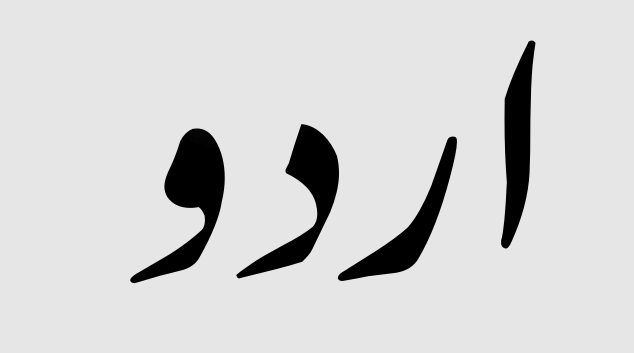Chart of Accounts Detailed Guide
This helps in organizing the accounts systematically and simplifies the process of adding new accounts in the future. The structure of a COA can be customized to fit the specific needs of a business. While smaller businesses may have a simpler, less detailed COA, larger enterprises might require a more complex and detailed structure to accommodate various departments, projects, or locations. This numbering system can vary greatly depending on the size of the business and its specific needs, but it generally follows this logical progression to keep financial activities well-organized.
Revenue Recognition
Looking at the COA will help you determine whether all aspects of your business are as effective as they could be. If you keep your COA format the same over time, it will be easier to compare results through several years’ worth of information. This acts as a company financial health report that is useful not only to business owner, but also investors and shareholders. A notable example is the implementation of a COA in a nonprofit organization.
Organize account names into one of the four account category types
Since 2011, Jayanti’s expertise has helped thousands of businesses, from small startups to large enterprises, streamline invoicing, estimation, and accounting operations. His vision is to deliver top-tier financial solutions globally, ensuring efficient financial management for all business owners. Similarly, it works as your dashboard, which gives a comprehensive view of your business finances.
Each account listed in the chart of accounts (COA) has a corresponding ledger account in the general ledger. Take note, however, that the chart of accounts vary from company to company. The contents depend upon the needs and preferences of the company using it. Double Entry Bookkeeping is here to provide you with free online information to help you learn and understand bookkeeping and introductory accounting.
Liability accounts
- Ask your accounting team to review and update the chart quarterly or yearly.
- The chart of accounts streamlines various asset accounts by organizing them into line items so that you can track multiple components easily.
- The number of figures used depends on the size and complexity of a company and its transactions.
- If the firm wants to include all the expenses to provide a complete understanding of where it is spending the finances, it can customize its COA.
Chart of accounts (COA) is a financial tool that acts like an index for a business’s financial transactions. By creating a COA, you’re setting up a unique list of all the account categories you’ll use to keep track of your business’s finances. Unique numbers assigned to accounts enable easy identification and classification.
COA Categories
Many organizations structure their COAs so that expense information is separately compiled by department. Thus, the sales, engineering, and accounting departments all have the same set of expense accounts. The structure of a COA can vary depending on the company’s size and the nature of its business. However, most COAs follow a specific structure designed to mirror the order of information as it appears in financial statements. Lastly, include the business expense accounts, i.e., fixed or variable expenses like utility bills, office supplies, or staff salaries. Including expenses can aid you in keeping track of business expenses and determining your business’s profitability.
Examples of expense accounts self-employment tax: everything you need to know include the cost of goods sold (COGS), depreciation expense, utility expense, and wages expense. Profits are generated from the sale of assets outside the company’s regular business operations. Revenue accounts record the revenue generated by the entity from revenue-generating operations.
Case studies and examples of the Chart of Accounts (COA) are essential for understanding how different organizations structure their financial data. For instance, tips for crafting invoice payment terms to ensure you get paid fast a small retail business might have a simplified COA with fewer categories, focusing primarily on sales, cost of goods sold, and operating expenses. In contrast, a multinational corporation’s COA would be far more complex, incorporating multiple layers of accounts to manage diverse revenue streams and expenditures across various regions. The chart of accounts is a listing of all accounts used in the general ledger of an organization. The chart is used by the accounting software to aggregate information into an entity’s financial statements.
How to Create a Chart of Accounts
A current asset whose ending balance should report the cost of a merchandiser’s products awaiting to be sold. The inventory of a manufacturer should report the cost of its raw materials, work-in-process, and finished goods. The cost of inventory should include all costs necessary to acquire the items and to get them ready for sale. The credit balance in this account comes from the entry wherein Bad Debts Expense is debited. The amount in this entry may be a percentage of sales or it might be based on an aging analysis of the accounts receivables (also referred to as a percentage of receivables). Some valuable items that cannot be measured and expressed in dollars include the company’s outstanding reputation, its customer base, the value of successful consumer brands, and its management team.
Can a chart of accounts be customized to fit specific business needs?
- Finally, regularly review and adjust your COA to reflect any changes in your business operations or financial reporting requirements.
- The group refers to the categorization of the account into one of the headings shown below.
- They indicate how much you owe to others, including business loans, unpaid bills, or any other short-term financial debts.
Understanding the statement of bookkeeping business names retained earnings can help you evaluate your business’s profitability and help you plan for future growth. We provide third-party links as a convenience and for informational purposes only. Intuit does not endorse or approve these products and services, or the opinions of these corporations or organizations or individuals.
Most modern accounting systems allow you to customize and expand your COA directly within the software, streamlining data entry and reporting. It provides a detailed framework for analyzing past transactions, invaluable for projecting future financial performance. The structure of the COA also promotes financial transparency and accountability, fostering trust among stakeholders. The general ledger serves as the central repository for all of a company’s financial transactions. Before recording transactions into the journal, we should first know what accounts to use. A chart of accounts is a critical tool for tracking your business’s funds, especially as your company grows.
Because transactions are displayed as line items, they can be quickly found and assessed. For the past 52 years, Harold Averkamp (CPA, MBA) hasworked as an accounting supervisor, manager, consultant, university instructor, and innovator in teaching accounting online. For the past 52 years, Harold Averkamp (CPA, MBA) has worked as an accounting supervisor, manager, consultant, university instructor, and innovator in teaching accounting online. Income tends to be the category that business owners underutilise the most.
This categorization goes beyond merely adhering to accounting standards; it aligns with your business’s operational needs. For example, manufacturing businesses may require detailed accounts for inventory and cost of goods sold, whereas service-based businesses might prioritize expense accounts related to service delivery. It encompasses all financial activities within an organization, with each account representing a distinct category – such as revenue, expense, or asset.




